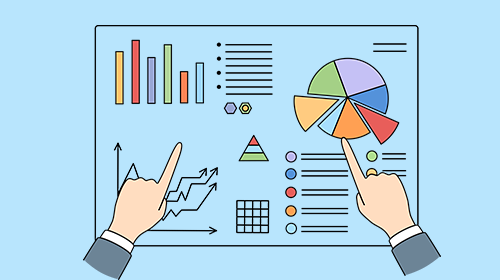Mastering the Compass:
The Correct Pattern of Using Indicators in Forex Trading
Technical indicators are like guideposts on the ever-winding road of forex trading. They offer valuable insights into market sentiment, momentum, and potential turning points. But just like a single signpost can’t guarantee your destination, relying solely on indicators can lead you astray. Here’s a deep dive into using indicators effectively:
The Two Sides of the Indicator Coin:
Positives:
- Quantifying the Market: Indicators translate price movements into numerical values, allowing for a more objective analysis of market momentum and volatility.
- Identifying Trading Opportunities: Certain indicator patterns can signal potential entry and exit points for trades.
- Confirmation: Indicators can validate price action, adding confidence to your entry and exit points. For example, a Relative Strength Index (RSI) dipping below 30 might confirm an oversold condition identified by a price reversal pattern.
- Identification of Trends: Moving averages and trend oscillators can help pinpoint established trends, allowing you to ride them for potentially larger profits.
- Overbought/Oversold Zones: Indicators like Stochastic Oscillator can highlight potential turning points where the market might be overbought or oversold, prompting you to consider counter-trend trades.
Negatives:
- Lagging Indicators: Most indicators react to past price movements, meaning they might miss the initial stages of a trend or reversal.
- False Signals: Market noise can create misleading indicator readings, leading to bad entry/exit points.
- Over-reliance: Forex is a complex system; relying solely on indicators can blind you to other crucial factors like fundamental analysis and risk management.
- Information Overload: Too many indicators can clutter your charts, making it difficult to identify clear signals.

The “Correct” Pattern of Using Indicators
There’s no one-size-fits-all approach, but successful traders generally follow these principles:
- Start Simple: Master a few key indicators (like Moving Averages or Relative Strength Index) before diving into the complex stuff.
- Confirmation, Not Conviction: Use indicators to support your trading plan derived from price action analysis, not replace it.
- Convergence is Key: Look for confluence – where multiple indicators point to the same signal – for stronger confirmation.
- Understand the Limitations: Recognize that indicators lag, can be misleading, and shouldn’t be the sole decision-making factor.
- Backtesting and Paper Trading: Before deploying indicators with real capital, backtest them on historical data and paper trade to assess their effectiveness in different market scenarios.
What Successful Traders Say About Indicators:
- George Soros: “Indicators can be useful servants but terrible masters.”
- Richard Dennis: “The best trading system is the one you understand the best.” (This emphasizes understanding the logic behind indicators, not just blindly following signals.)
- Willam Eckhardt: “A good trader is a suspicious trader.” (Indicators can be manipulated, so healthy skepticism is necessary.)
- W.D. Gann: “There are no hard and fast rules. One must use judgment based on a knowledge of the factors that control price movements.” (Indicators are tools, not absolutes; sound judgment is crucial.)
- Bill Williams: “Indicators are like traffic lights. They tell you when to slow down, when to speed up, and when to stop.” – Indicators
provide guidance, but the final decision to enter or exit a trade rests with the trader.

The Bottom Line
Indicators are valuable tools, but they should not be the only driver of your trading decisions. Develop a strong understanding of price action, risk management, market psychology and fundamental analysis. Use indicators to confirm your analysis and identify potential opportunities, not to blindly chase signals. Remember, successful business is about a holistic approach, not relying on a single tool.
Disclaimer: This article is for informational purposes only and should not be considered financial advice. Please consult with a qualified financial advisor before making any investment decisions.
Happy trading
may the pips be ever in your favor!



